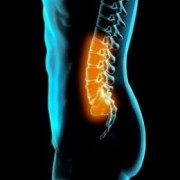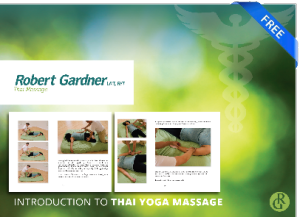Q & A #1 Tail Bone Pain
Hey, Robert, I have a problem that you might be able to help with, given your therapeutic expertise. (in all actuality, I suffer from a variety of physical problems, as you may or may not be aware of, so by way of caveat here let me just state plainly that I am not seeking “medical” advice).
It appears that I have some sort of autoimmune condition which is affecting my soft tissue and joints; basically I’m quick to injury and slow to heal, and no one can figure out why. At this point, I don’t even care anymore; I’ve taken matters into my own hands and am focusing mind-body-soul on my recovery, which means proper diet, proper exercise, sleeping, and a positive attitude, yadda yadda yadda… My wrists and ankles have it the worst, but I’m slowly building up long-atrophied muscle mass and getting very weak tendons acclimated to daily activity. It’s been a very long and grueling process, but I am seeing slow progress.
Here is the specific problem I’m having right now in my rehab. After about two years of being sidelined by a pretty persistent achilles strain, I’ve been able to work my way up to walking a good mile three times a week. However, I recently began to notice that my glutes were not firing correctly, and this was causing undue strain on my lower back. I quickly realized I could not even hinge properly at the hips in order to do a proper deadlift, etc. And the reason seemed to be that my hamstrings were just insanely tight. So for the past month or so I’ve been working on building up my glutes, making sure that they are firing properly when I walk, etc. And also I’ve been attempting to stretch out my hamstrings. However, almost as soon as I began this workout plan, I mysteriously developed this severe tail bone pain that will simply not go away! I never hit my tailbone or injured it in anyway (that I know of), but it hurts unbearably if I sit on it wrong, and even sometimes when I’m just walking. I can’t make heads or tails of it, except that it is undeniably worse on the days after I stretch out my hamstrings.
Have you ever came across anything like this? Are there any specific stretches or techniques that might help to alleviate this pain? I realize that without an examination there’s probably very little that you could tell me definitively about what is going on here, but maybe you could point me in the right direction. You see, in my experience doctors are not very much help with this sort of thing, and every time I go to a physical therapist they just make things worse with their over-zealous recommendations; they just don’t seem to have the tools to deal with a patient in my reduced state of physical fitness.
Respectfully,
Anonymous
Dear Anonymous,
You’re correct in not seeking medical advice from a massage therapist but based on the info you gave me, we can try some things out and see if it helps. I’ve had a 12 year career helping people with odd pain no one else seemed to understand so I’ll walk you through a few things that may help.
My guess based on what you describe is that you’re having some sort of trigger point dysfunction in your glutes. Most people are Very tight around their sacrum which makes up the S or the Sacroiliac joint. The musculature on most people I work with is taught, tense and gets very little stretching. This muscular tension alone will cause pain in the low back around the legs, possibly down the legs and so on. With the information you’ve given me you could have latent issues that wake up from regular exercise etc. In addition, muscles on one side of your sacrum may be tighter than say the left and imbalance your hips as you’re trying to open things up.
In short, I think everything you’re doing is great! I’ll give you a few things to try out and we’ll see if this helps.
Hamstrings are rough to deal with and I recommend you stretch your hamstrings as I show in this video. Remember to keep the leg bent, whether standing in a forward bend or sitting in a chair. This puts pressure on the hamstrings but protects your low back. Slow and steady is the way to go.
I think the other best thing for your glutes, other than what we’ve already covered, is to find a tennis ball and lay down on it. Put the tennis ball smack dab in your glutes and you can press on anything fleshy. You’ll be anywhere from the greater trochanter of your femur to right along the sacrum. Don’t put pressure directly on the tailbone! As long as you’re in flesh, you’re fine. The intensity should be something that you can breathe into through your nose. If you find it hard to breathe, if it’s too much pressure back off or maybe fold a towel over the tennis ball. You’re looking for tender spots that you can use the tennis ball to massage slowly. Try this for 5 minutes a day and see if there’s any improvement. The chart below shows some of the referred pain we’re talking about.
Trigger Point Pain in the Gluteus Maximus
Make sure to work both sides, if one is more tender work that side a little more but do both to find out.
I hope this information helps. Get back to me when you’ve done this so we can update. If that doesn’t we’ll move on to something else until you get some relief.


